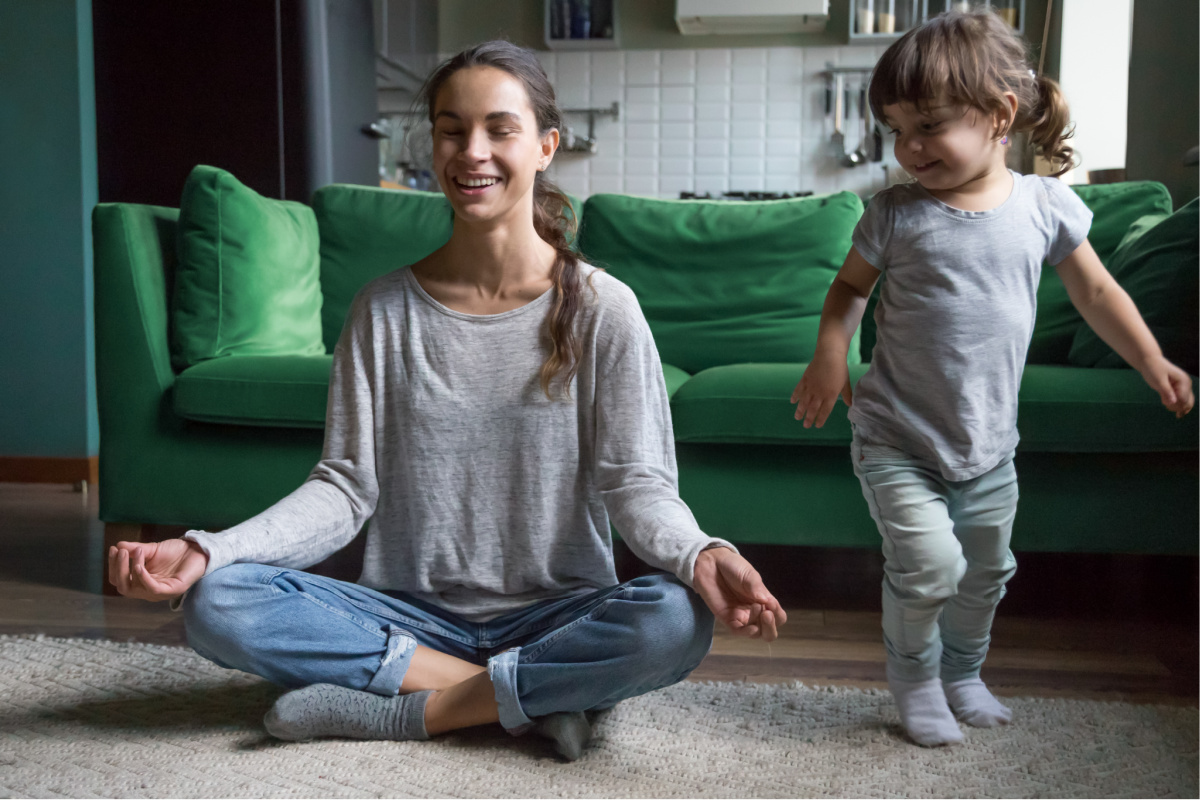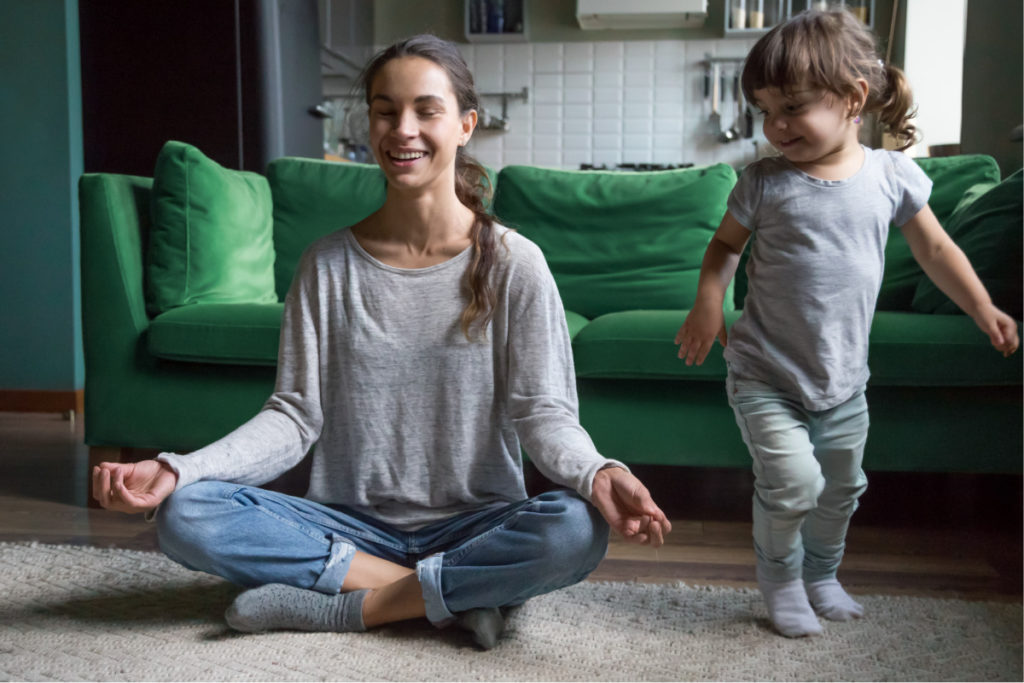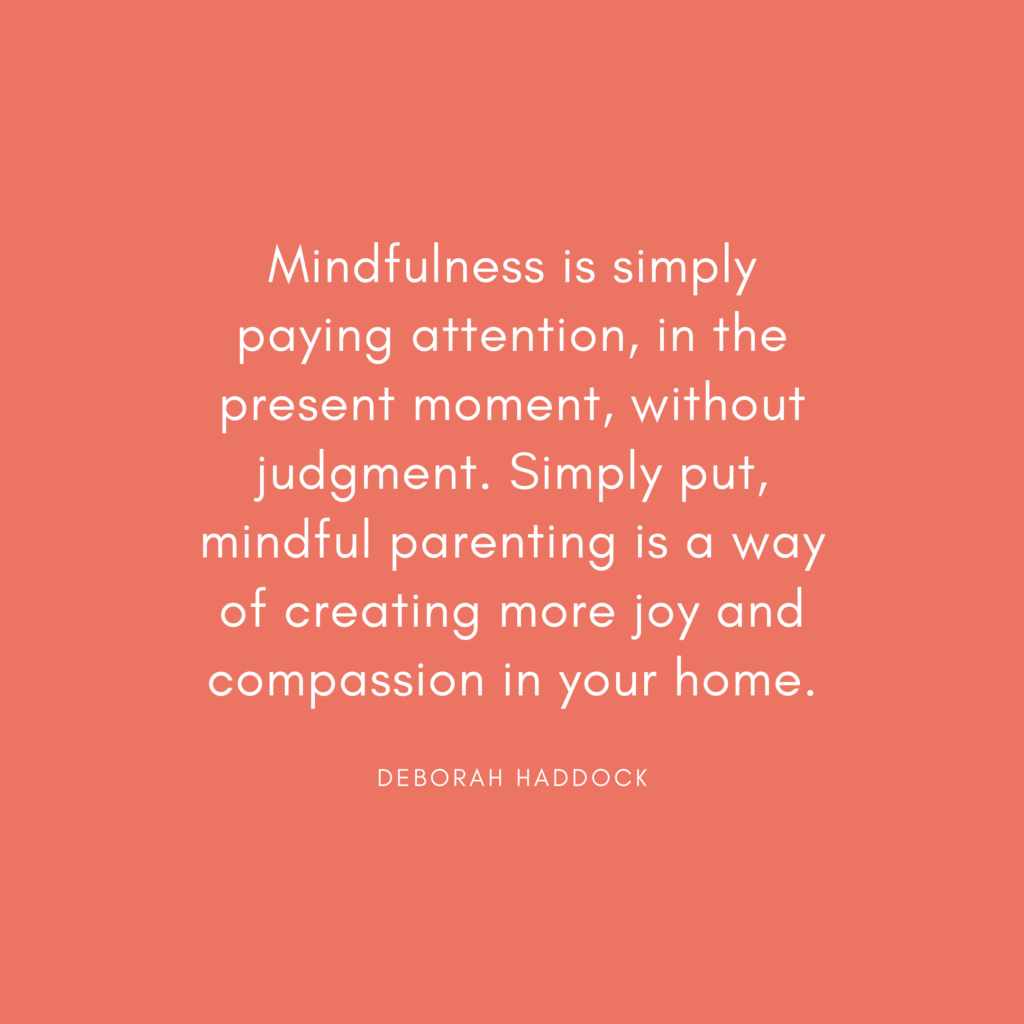Mindfulness is one of those words that is used in many situations in our culture. It continues to grow in popularity and people practice it in the workplace, home, places of worship, and community centers. You can easily find mindfulness workshops or retreats in your area, which leads us to the next question: What is mindfulness and why are so many people interested in it?
Mindfulness is simply paying attention, in the present moment, without judgment.
The practice is ancient and the concept is easy to understand. Yet, the real challenge is to practice mindfulness with intention and consistency. The easiest way to create an individual mindfulness practice is to take a class or workshop because the support of others is helpful in sustaining a practice. Another option is to download an app and begin practicing on your own. There’s no need to sit cross-legged and meditate for long periods of time. The primary key to practicing mindfulness is to shift your awareness to your breath. Sit quietly. Breathe in. Breathe out.
Mindful Parenting
At this point, you might be wondering what this has to do with parenting. Simply put, mindful parenting is a way of creating more joy and compassion in your home. It is also based on paying attention in the present moment. But, you have to learn to practice mindfulness for yourself, first. You don’t need to practice for a long time, but it is helpful to learn the basics before you start practicing as a family.
The other aspect to Mindful Parenting is that it is an intentional way of relating to each other, one that relies on understanding and compassion.
Let’s imagine that Emily comes home from school and is crying. You sit down with her and ask what’s wrong and she tells you that some other girls are being mean to her and not letting her join their group. You want to express your anger about what is happening to her, but you also know that doing that will probably keep Emily from continuing to share. You decide to put mindful parenting to the test, which might end up looking something like this:
First, you notice your own feelings. Rather than expressing those feelings to Emily, you choose to pause and take a couple of deep breaths.
Then, you ask Emily to tell you about what happened. You listen deeply, without trying to fix anything. You validate what Emily is saying, without feeling like you have to have any answers. Your goal is for Emily to feel your love and compassion because you’ve created a space where she feels free to talk and express her feelings. Sometimes children, as well as adults, need help in naming their feelings. You ask Emily what she is feeling and where it is in her body. If she can’t name her feelings, you help her to become more aware. You tell Emily that you are going to close your eyes and breathe together to help her see how she’s feeling. After a couple of minutes, you both open your eyes and you ask Emily what she is feeling. You might name a few feelings if this exercise is difficult for her and you might even ask her how her head or stomach feels. This will help Emily to feel heard and you, as the parent, are teaching her to name feelings, notice how feelings are connected to the body, and how to manage them. Most importantly, you are helping to create a loving and compassionate relationship with your child.
Mindfulness As a Practice
Now, let’s talk honestly. Mindfulness is a practice. When we decide this is a practice that we want to nurture, we do it for a lifetime. The goal isn’t to become an expert, but to simply practice. You do the best that you can in the moment. The same is true for mindful parenting, probably more so. When you decide, as a family, that you want to create an environment that is calm, loving, and compassionate, you practice. That’s all, because one of the characteristics of mindfulness is no judgment. I love that! Mindfulness is gentle and affirming.
Jon Kabat-Zinn, founder of the Center for Mindfulness and the Stress Reduction Clinic at the University of Massachusetts Medical School, has defined mindfulness as “the awareness that arises from paying attention, on purpose, in the present moment and non-judgmentally.” He is widely considered to be the person who made mindfulness mainstream in America, and along with his wife, Myla, wrote the book Everyday Blessings: The Inner Work of Mindful Parenting. In the book, they discuss such things as:
Trying to see the world from your child’s perspective at least once a day. This means you need to step back for a moment and let go of your own beliefs about how things are or how you want them to be.
Learn to live with tension without losing your own balance by taking deep breaths and staying in the present moment. When situations are stressful, children need the adults that are around them to provide a sense of calm.
When you need to set clear boundaries with your child, practice doing so with a sense of awareness and generosity, as opposed to acting out of anger and a need for control.
The greatest gift you can give your child is your self. If you are practicing mindfulness in your own life, it will begin to feel natural to do the same with your child. You’re also modeling a way of being for your child.
Practicing Mindfulness As a Family
When I practice mindfulness with others, we use a mindfulness bell. The bell is a reminder to stop, be quiet, and take a deep breath. We sound the bell before and after meditation, but also use it during retreats, as a way of reminding people to come back to the present moment. You might want to do this in your own home. We’ve all been in situations where emotions are running high and people start raising their voices or arguing. This would be a perfect time to sound a mindfulness bell, giving everyone the opportunity to be silent and breathe. However, a mindfulness bell can be used at any time. Maybe you’re rushing to get dinner on the table, the kids are watching TV while trying to do homework at the same time, and the dog is barking. Anyone in the family can choose to sound the bell and the chaos is calmed.
Research has shown that children are much better at managing emotions when they are taught to accept them. For example, if your child is anxious, you can offer them various ways of managing the feeling. No feeling is considered bad, but overwhelming feelings do need to be managed. Sitting down with your child and coloring together is a good activity for managing anxiety. It draws the child’s attention away from the thoughts and feelings that are upsetting and transfers them to something more calming. Sometimes I’ll ask a child to draw me a picture about what’s going on with them. After they do, I ask them to give me a title for the drawing. It’s amazing how that activity can lead to a talk that might not otherwise happen. Another activity is to sit outside and watch the clouds. You can tell your child that feelings are like clouds, in that they come and go. Ask the child to pick a cloud and then the two of you can breathe deeply until every bit of that cloud disappears from sight.
Making mindfulness fun is the key to children wanting to participate. Mindful breathing is deep breathing from the abdomen, but that can be a difficult concept for younger children to understand. When I help children with their breathing, I use different techniques to help them relate. First, I demonstrate how to breathe from the belly. If the child has a dog, I’ll tell them the breathing is the same way that a puppy breathes. Then I’ll suggest that they lie down with their dog to practice breathing together. Another tool is for the child to imagine that their tummy is like a balloon and every time they breathe, they are blowing up the balloon. Finally, I might ask a child to lie on the floor and place a small stuffed animal on their stomach. The goal is to breathe in a way that will make the stuffed animal move up and down. When your child is struggling with feelings, you can remind her to breathe. Better yet, you can breathe together.
Do you have more than one child? If so, they’re bound to have conflicts from time to time. Depending on the age of the children, I recommend having a designated area in your house where conflicts are discussed. Younger children will obviously need some guidance, but older children can be taught how to resolve the conflict on their own. Just go to Social Emotional Workshop to read about the steps that children can use to resolve conflicts effectively. The first step is for each person to practice mindfulness in order to calm down. Then, when the children are calm enough to talk, it’s time to put the steps into actions. It’s helpful to use an object so that the children remember to fully listen to each other. You can use anything, but I like to use a talking stick. The person holding the talking stick is the only one allowed to speak and the children pass the stick back and forth as they go through the conflict resolution steps. A stone with an appropriate word for the situation, such as listen, peace, love, etc. is another good tool that can be used during the conversation.
Finally, enrolling your children in mind/body activities is helpful because mindfulness is a natural component of learning those skills. Yoga for children is a good example of this. Martial arts can be helpful for children who have anger issues or hyperactivity because they will learn focus and discipline. Personally, I like classes like aikido or tai chi that are more focused on resolving conflict with nonviolence. Many children also benefit from taekwondo, a martial art with the philosophy of creating a more peaceful world.
Building Mindful Parenting Skills
Mindful parenting can be learned if your desire is to have more peace and cooperation in your home. This article only focuses on a few aspects of this topic. There are many more. To begin this practice, focus on the basics and then add to your toolbox from there.
Learn mindful breathing and then teach it to your children. Practice together once a day, if possible.
Teach your children a few mindfulness techniques to use when they are experiencing overwhelming feelings.
Practice looking at the world from your child’s perspective at least once a day.
Resources for Mindful Parenting
- “Mindful Parenting Family Tool Kit,” Sue Hutton, BSW, MSW
- “Eight Ways to Bring Mindfulness Into Your Family”
- “Mindfulness Moments with Yoga for Classrooms,” Paula Turner, San Antonio Charter Moms, July 20, 2020
- “Making Faces and Building Social and Emotional Skills,” Jennifer St. Pierre and Elizabeth Scott, San Antonio Charter Moms, July 15, 2020
- “Grumpy Pants: Art and Emotional Wellness,” Jessica G. Rivera, San Antonio Charter Moms, July 10, 2020
- “The New Digital Parenting: Connections Over Conflict,” Emily Daniels and Lindsay Durham, San Antonio Charter Moms, July 9, 2020
- “Embracing Emotional Learning During a Pandemic,” Kristen Henry, San Antonio Charter Moms, June 17, 2020
- “No, Really, How Do You Feel? Helping Children and Teens Understand and Regulate Their Emotions,” Kristen Henry, San Antonio Charter Moms, June 3, 2020
Charter Moms Chats
Watch Deborah Haddock’s interview with Inga Cotton to learn more about mindful parenting. Watch more interviews on Charter Moms Chats.
About the Author
Deborah Haddock received a Master’s in Education from Fort Hays State University, a Master’s in Counseling Psychology from Adler Graduate School of Psychology, Wellness Coaching Certification through the Mayo Clinic School of Health Sciences, and Spiritual Direction Certification through Perkins School of Theology at Southern Methodist University.
During her career, Deborah has worked as an educational consultant for children with behavioral and mental health issues, as a psychologist in her own practice, and as a counselor for military families on Army and Air Force Bases throughout the world.
Deborah is currently working in her own business, as a Spiritual Director and Wellness Coach. She can be reached at DeborahBrayHaddock@gmail.com.



